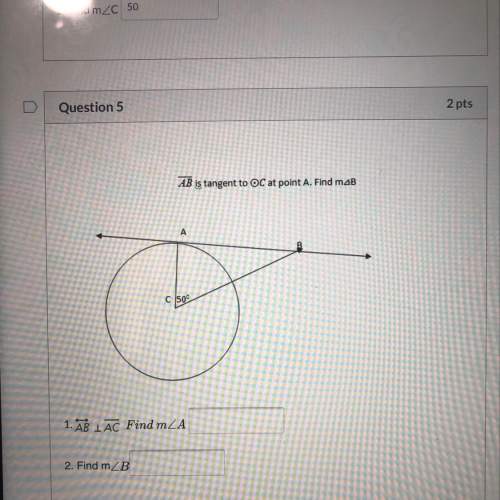
Mathematics, 03.07.2020 05:01 colyernicholas44
Two Way Frequency Tables: Tutorial Round your answers to the nearest hundredth
23 of 32 E Save & Exit
This is the original two-way frequency table that describes boys' and girls' favorite season of the year. Based the table,
complete the two-way relative frequency table based on the total number of people surveyed.
Two-Way Frequency Table
Summer
Fall
Winter
Total
Spring
58
22
28
39
Girls
12
137
17
35
8
82
Boys
80
45
74
Total
20
219
Relative Frequency for the Whole Table
Spring
Summer
Fall
Winter
Total
Girls
Boys
Total
Celeme

Answers: 2


Another question on Mathematics

Mathematics, 20.06.2019 18:04
The hypotenuse of an isosceles right triangle is $14\sqrt 2$. what is the area of the triangle?
Answers: 2

Mathematics, 21.06.2019 16:00
Angela rode his bike around a bike trail that was 1/4 of a mile long he rode his bike around the trail 8 * angelo says he wrote a total of 8/4 miles to russell says he's wrong and he actually and says that he actually wrote to my who is corrupt use words and trying to explain how you know.
Answers: 2

Mathematics, 21.06.2019 16:40
The sum of two numbers is 86, and their difference is 20. find the two numbers
Answers: 2

Mathematics, 21.06.2019 17:00
In tossing one coin 10 times, what are your chances for tossing a head? a tail? 2. in tossing one coin 100 times, what are your chances for tossing a head? a tail? 3. in tossing one coin 200 times, what are your chances for tossing a head? a tail? deviation = ((absolute value of the difference between expected heads and observed heads) + (absolute value of the difference between expected tails and observed tails)) divided by total number of tosses. this value should always be positive. 4. what is the deviation for 10 tosses? 5. what is the deviation for the 100 tosses? 6. what is the deviation for 200 tosses? 7. how does increasing the total number of coin tosses from 10 to 100 affect the deviation? 8. how does increasing the total number of tosses from 100 to 200 affect the deviation? 9. what two important probability principles were established in this exercise? 10. the percent of occurrence is the obtained results divided by the total tosses and multiplied by 100%. toss the coins 100 times and record your results. calculate the percent occurrence for each combination. percent head-head occurrence: percent tail-tail occurrence: percent head-tail occurrence:
Answers: 3
You know the right answer?
Two Way Frequency Tables: Tutorial Round your answers to the nearest hundredth
23 of 32 E Save &...
Questions


Mathematics, 10.02.2021 18:40

Mathematics, 10.02.2021 18:40


Mathematics, 10.02.2021 18:40



Mathematics, 10.02.2021 18:40


Mathematics, 10.02.2021 18:40


Chemistry, 10.02.2021 18:40






Mathematics, 10.02.2021 18:40

Mathematics, 10.02.2021 18:40

Mathematics, 10.02.2021 18:40




